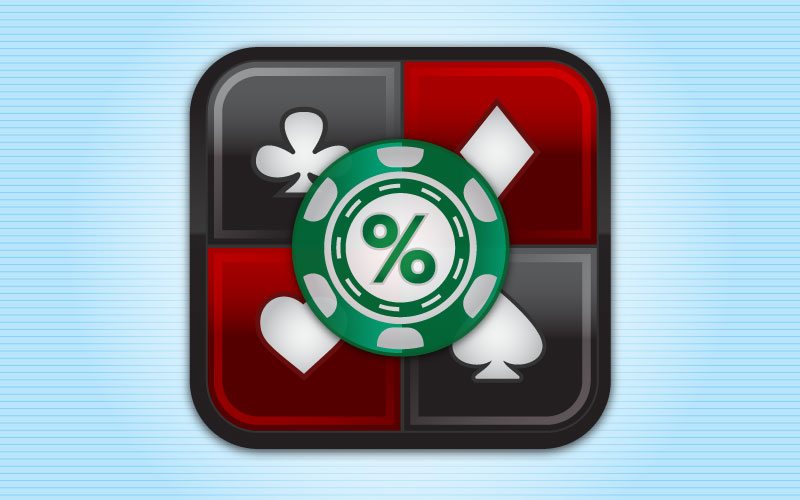I’m not going to cover the theory underlying ICM as this has been covered much more comprehensively elsewhere (Link here), so these posts are intended to be a step-by-step guide to the following situations that cannot be calculated using SNGPT (note that SNG Wiz allows you to calculate the second, but not the first of these):
a. You open raise and somebody pushes over, should you call?
b. Somebody open raises, should you push over?
Hopefully this guide will help players answer their own questions when they find themselves in situations 1 or 2 above. I hope that this will become clearer once I have covered it, but ideally the only question we should be discussing on these forums is whether the hand ranges we have assigned to opponents are correct. The calculations themselves should be relatively uncontroversial and become relatively quick and easy with a bit of practice.
Of course we will never be able to do these calculations whilst playing in a game but by analyzing hands after the event we can hone our own instincts such that these decisions will become intuitive, if not necessarily second nature.
a. You open raise and somebody pushes over, should you call?
This is a very common situation that occurs in most SNGs. Obviously there will be many situations where the answer is obvious, so let’s take a slightly trickier example (with apologies to the poster of this hand):
Quote:
PokerStars No-Limit Hold’em Tourney, Big Blind is t100 (4 handed) Hand History Converter Tool from FlopTurnRiver.com (Format: FlopTurnRiver)
SB (t3912)
BB (t2194)
Hero (t3455)
Button (t3939)
Preflop: Hero is UTG with 9 , 9 .
Hero raises to t300, 2 folds, BB raises to t2294, Hero????
Hero’s reads were that the BB is relatively tight. So, what are the steps that we need to take here:
1.Calculate how many chips Hero will have under the following three scenarios:
– Hero folds to the push
– Hero calls the push and wins
– Hero calls the push and loses (in many cases this means that Hero is out)
2.Use the ICM calculator (link here) to calculate the value (measured by % of the total prize pool) of Hero’s chips under each of the three scenarios above. Don’t forget to adjust the other stacks if the other players have posted blinds or called.
3.Calculate what % of the time Hero needs to win to make % of prize pool (call) = % of prize pool (fold)
4.Using Pokerstove, compare the required win % to Hero’s actual win % against Villain’s likely range.
Worked example
Here are the workings for the example above:
1.Chips under various scenarios.
– If Hero folds he will have 3155 chips
– If Hero calls and wins he will have 5699 chips
– If Hero calls and loses he will have 1261 chips
2.Value of these chips calculated as % of the prize pool (remembering that even if Hero has 100% of the chips these are only worth 50% of the prize pool)
– Fold (3155 chips) = 24.2% of prize pool
– Call and win (5699 chips) = 36.1% of prize pool
– Call and lose (1261 chips) = 12.1% of prize pool
3. % of time Hero needs to win to make calling (taking into account the possibility of both winning and losing) worth at least the same % of the prize pool as folding:
24.2% = (x * 36.1%) + ((1-x) * 12.1%) where x = probability of winning
Solving for x (if you suck at algebra because like me you haven’t done it for 15+ years, you can use goal seek in Excel to solve this), x = 50.4% so Hero needs to be at least 50.4% to win against Villain’s likely range to make this call +EV.
(Note the calculation becomes easier if Villain has Hero covered because the term starting with (1-x) won’t be there)
Alternatively, we can restate the formula as:
x = (Fold – Lose) / (Win – Lose)
x = (24.2 – 12.1) / (36.1 – 12.1)
x = 12.1/24
x = 50.4%
4.Now the hard part – figuring out Villain’s likely range. Hero’s read is that Villain has been tight. Another relevant factor is that it’s the bubble, Hero has Villain covered (so if Villain pushes, Hero calls and Villain loses he is OOTM) and Villain has a >20x BB stack so isn’t yet completely desperate, a reasonable range might be TT+, AK+. In this spot I actually prefer to use a slightly looser range because if calling the push is –EV using a looser range it will be even more –EV using a tighter one. So let’s use 88+, AQ+ as our range here.
Using Pokerstove, Hero’s 99 is 41% to win against 88+, AQ+. 41% is less than the 50.4% that Hero needs to be to win against Villain to make the call +EV so this is a clear fold:
Code:
Equity (%) win (%) tie (%)
Hand 1: 41.3296 % 40.43% 00.90% { 99 }
Hand 2: 58.6704 % 57.77% 00.90% { 88+, AQs+, AQo+ }
Interestingly, even if we widen Villain’s range to 66+, AT+ Hero is only 49.4% to win against this range so calling is STILL –EV…
Submit your review | |








